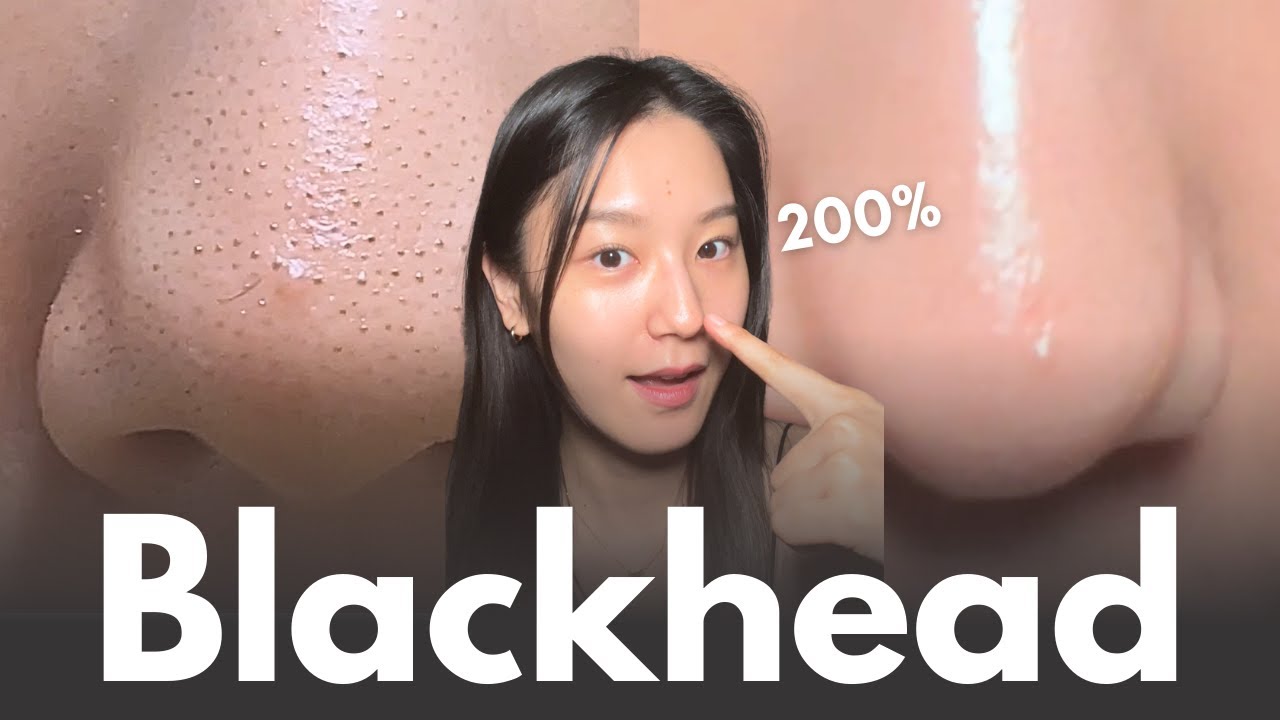How to really remove blackheads at home in 7 days
Are you tired of dealing with stubborn blackheads on your nose? You’ve tried pore strips, cleansing masks, and even exfoliators, but they only provide short-term results. If you’re looking for a long-lasting solution, you’ve come to the right place. In this guide, we’ll introduce a proven skincare routine to help you manage blackheads effectively.
Understanding Blackheads and How to Treat Them
Blackheads form when excess sebum (oil) and dead skin cells clog your pores, oxidizing and turning black when exposed to air. To prevent blackheads from recurring, you need a structured routine that includes deep cleansing, exfoliation, and pore care.
We’ll break this down into three key routines:
1. Weekly Deep Cleansing Routine
2. Three-Times-a-Week Exfoliation Routine
3. Daily Skincare Maintenance
By following these steps consistently, you can achieve clearer skin and prevent future breakouts.
—
Weekly Deep Cleansing Routine
Step 1: Dissolving Sebum with Cleansing Oil
Using a cleansing oil is one of the most effective ways to dissolve sebum and remove impurities. Here are two top recommendations:
Lell Cleansing Oil: Made with natural oils, this product has a lightweight texture and a refreshing lemon scent, making it ideal for dry and sensitive skin.
Make P:rem Cleansing Oil: Contains sunflower seed oil, apricot kernel oil, and jojoba seed oil, making it highly effective for removing sebum—best suited for oily and combination skin.
How to Use: Apply cleansing oil to a dry nose and massage gently in circular motions. You may feel small granules forming as sebum is lifted. Rinse thoroughly with lukewarm water.
Step 2: Absorbing Excess Sebum with a Pore Pack
Pore mud packs help absorb sebum and refine skin texture. Here are two effective options:
Innisfree Super Volcanic Pore Clay Mask: A powerful sebum-absorbing mask, perfect for oily and combination skin.
Mixsoon Pore Pack: A gentler option that effectively cleans pores without over-drying, making it suitable for dry and sensitive skin.
How to Use: Apply a generous layer to a dry nose, leave it on for 10-15 minutes, then rinse off with water. A sponge or microfiber cloth can help remove residue more effectively.
Step 3: Tightening Pores with a Green Tea Pack
Green tea contains antioxidants and tannins that help tighten pores and regulate oil production.
How to Make & Use: Brew a cup of green tea, soak cotton pads in it, and refrigerate them. Apply the chilled pads to your nose for 10 minutes to soothe and tighten pores.
—
Three-Times-a-Week Exfoliation Routine
Step 1: Softening Sebum with Jojoba Oil
Jojoba oil closely resembles the skin’s natural sebum, making it an excellent pre-cleansing step.
How to Use: Apply a thin layer of jojoba oil to your nose and let it sit for 5-10 minutes before washing your face.
Step 2: Exfoliating with a Mild Acid Cleanser
Mildly acidic cleansers help remove dead skin cells and control excess sebum production.
Innisfree BHA Cleanser: Ideal for oily and combination skin.
iUNIK Centella Bubble Cleanser: Contains gentle exfoliating ingredients and is suitable for acne-prone skin.
Jumiso AC Cure Cleanser: A great option for those with sensitive skin, as it provides mild exfoliation without irritation.
How to Use: Use 3-4 times per week, focusing on the nose area.
Step 3: Strengthening Pores with Pore Essence
A pore essence helps tighten and refine enlarged pores.
How to Use: Apply a small amount after cleansing, focusing on problem areas. Use 3-4 times per week for best results.
—
Daily Skincare Maintenance
Step 1: Cleansing with Oil or Pore Pads
If you wear heavy makeup, cleanse your nose separately with an oil cleanser. For those who don’t use makeup, pore care pads are an effective alternative.
Step 2: Controlling Sebum with Niacinamide & Retinol
Niacinamide helps regulate oil production, while retinol improves skin renewal and reduces blackhead formation.
Anua Niacinamide Serum (10% Niacinamide, 4% TXA): Great for sensitive skin and hyperpigmentation.
COSRX Niacinamide Serum (15% Niacinamide): Lightweight and perfect for oily skin.
Innisfree Retinol Cream: A beginner-friendly option for all skin types.
COSRX Retinol Cream (0.1% Retinol): Stronger formulation for targeted treatment on the nose.
How to Use:
Apply niacinamide in the morning.
Use retinol at night.
If you have sensitive skin, alternate usage to avoid irritation.
—
Final Thoughts: Consistency is Key
Managing blackheads requires patience and consistency. You don’t need to implement all steps at once—start with one and gradually build your routine. Customize the frequency based on your skin type and condition.
If you found this guide helpful, feel free to leave a comment or ask any questions. Don’t forget to subscribe for more skincare tips. Thank you for reading, and happy skincare!
Share this content:











